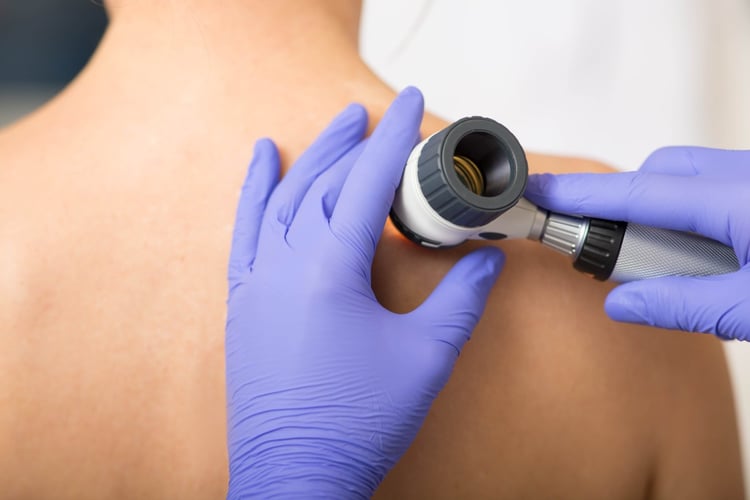
NCG Medical knows your dermatology practice is essential for serving the patients in your community. You want it to be a safe, welcoming space for patients to get the best treatment from your dermatology experts - and part of achieving that mission comes from efficient administrative strategies.
Medical billing processes and regulations often cause stress and headaches to your billing team; this blog addresses the more common medical billing challenges dermatology practices face and includes tips for taking them in stride.
Quick Links
- Why is Efficient Medical Billing Important For Dermatology Practices?
- Common Challenges with Medical Billing
- Tips for Efficient Medical Billing and Coding
Why is Efficient Medical Billing Important for Dermatology Practices?
There are many benefits to streamlining your dermatology practice’s medical billing operations, including:
More Time to Focus on Patients
Medical billing - with all its paperwork and extensive documentation - is tedious work that can take precious hours out of your day. Optimizing your practice’s administrative efforts in this regard will result in less time spent with a headache and more time spent tending to your clients!
Stay Updated with Regulations
Medical billing and coding regulations are constantly being updated. If your medical practice isn’t routinely keeping up to date with the latest medical billing regulations, then you may not be in compliance and encounter issues with insurance companies. This can result in costly delays or even denials. One of the benefits of maintaining an efficient billing department within your organization is to make your practice adaptable to these frequent changes.
Grow Your Dermatology Practice
With an effective practice of medical billing, your dermatology practice runs more smoothly internally and externally. Optimized operations mean you can follow the numbers of your practice and consider your future growth potential. Also, when bills are paid on time and with minimal error, your practice gets paid for services rendered more swiftly than dealing with extra paperwork and back-and-forth with insurance companies.
Common Challenges with Medical Billing
Here are some of the more common dermatology medical billing challenges to be aware of so your practice can experience the most streamlined billing process.
There are Two Systems of Medical Billing Codes
The different coding systems used in medicine serve as a means of communication between medical providers and the insurance companies that pay for services rendered during a patient encounter. There are two main coding systems commonly used by providers: the International Classification of Diseases (ICD) and the Current Procedural Terminology (CPT).
The ICD is the widely used classification system for medical diagnoses. The ICD system is sponsored by the WHO and is used by numerous countries to record morbidity and mortality data. ICD-10 diagnosis codes are much more detailed and there are more than 68,000 disease codes. These codes are typically 3 to 7 characters in length and all codes begin with an alpha character.
On the other hand, the Current Procedural Terminology (CPT) codes are used for coding all types of inpatient and outpatient procedures and services. Dermatology practices use many of these codes to bill for in-office procedures like skin biopsies, destructions, excisions, and Mohs surgery. Within the CPT coding system are the Evaluation and Management (E/M) codes, which are used to appropriately bill for the level of office visit or inpatient visit. The E/M code is often referred to as the “level of service” (LOS) and requires documentation of history, exam findings, and management decisions.
Your dermatology practice needs to have extensive knowledge of both coding systems, and their many layers, in order to properly bill for time and services!
Outdated Patient Insurance Information
One of the challenges any medical practice faces is not having access to the latest insurance information from your patients. There are a number of reasons for the billing change, but the most important thing is to ensure your administrative team gets in touch with the correct and current insurance provider. Taking the time before providing services to double-check insurance information can save your practice months of unpaid claims time.

Tips for Efficient Medical Billing and Coding
To help avoid hiccups in medical billing, follow these tips for the most effective dermatology medical billing experience.
Know Which Modifiers to Use - and When
- Using the “25” Modifier: According to CMS, the “25” modifier is defined as, “A significant, separately identifiable evaluation and management [E/M] services by the same physician on the same day of the procedure or other service.” While this sounds quite simple, it’s one of the most misused modifiers, and it’s important to note that the modifier should only be used along with E/M codes for patients who are already established with the practice. Don’t use it with new patients or along with procedure codes.
- Using the “59” Modifier: One of the most misused modifiers is the “59” modifier, and for this reason, the X-modifiers were issued by CMS as a subset of the “59” modifier. With this modifier, you can unbundle codes so distinct procedures can be billed, and the claim passes Medicare’s bundling edits. It’s important to understand the recently added X-modifiers, because if an X-modifier applies, you should use it in place of the “59” modifier.
- The X-modifiers include:
- XE – A distinct service provided in a separate encounter
- XU – A service that’s distinct because it doesn’t usually overlap the main service or it’s unusual
- XS – A distinct service performed on a separate structure or organ
- XP – A distinct service that’s performed by another provider
Keep a Cheat Sheet of Frequently-Used Medical Codes
By keeping a handy reference sheet of your practice’s most common codes, your billing team will have an easier time navigating through the thousands of potential codes. Use this as a starting point in compiling one for your practice:
- B07.0 – Plantar wart
- B07.9 – Viral wart, unspecified
- B35.3 – Tinea pedis
- B35.4 – Tinea corporis
- B35.5 – Tinea imbricata
- C43.31 – Malignant melanoma of the nose
- C44.01 – Basal cell carcinoma of skin of the lip
- D03.30 – Melanoma in situ of unspecified part of the face
- D48.5 – Neoplasm of uncertain behavior of skin
- I83.10 – Varicose veins of unspecified lower extremity
- I87.2 – Venous insufficiency (chronic) (peripheral)
- L40.0 – Psoriasis vulgaris
- L40.52 – Psoriatic arthritis mutilans
- L40.8 – Other psoriasis
- L81.0 – Postinflammatory hyperpigmentation
- L81.2 – Freckles
- L81.9 – Disorder of pigmentation, unspecified
- L82.1 – Other seborrheic keratosis
- L90.5 – Scar conditions and fibrosis of skin
- L90.6 – Striae atrophicae
- L20.83 – Infantile (acute) (chronic) eczema
- L20.9 – Atopic dermatitis, unspecified
- L21.9 – Seborrheic dermatitis, unspecified
- L30.9 – Dermatitis, unspecified
- L70.9 – Acne, unspecified
- L71.9 – Rosacea, unspecified
- R21 – Rash and other nonspecific skin eruptions
- Z48.02 – Encounter for removal of sutures
At NCG Medical, we’ve been helping healthcare practices devote more attention to patients for four decades by handling all the ins and outs of the medical billing process. Our customized solutions can improve revenue management cycles and ensure that your practice is realizing the full value of the services it provides. Contact us today to learn more about how we can transform your medical practice management.

